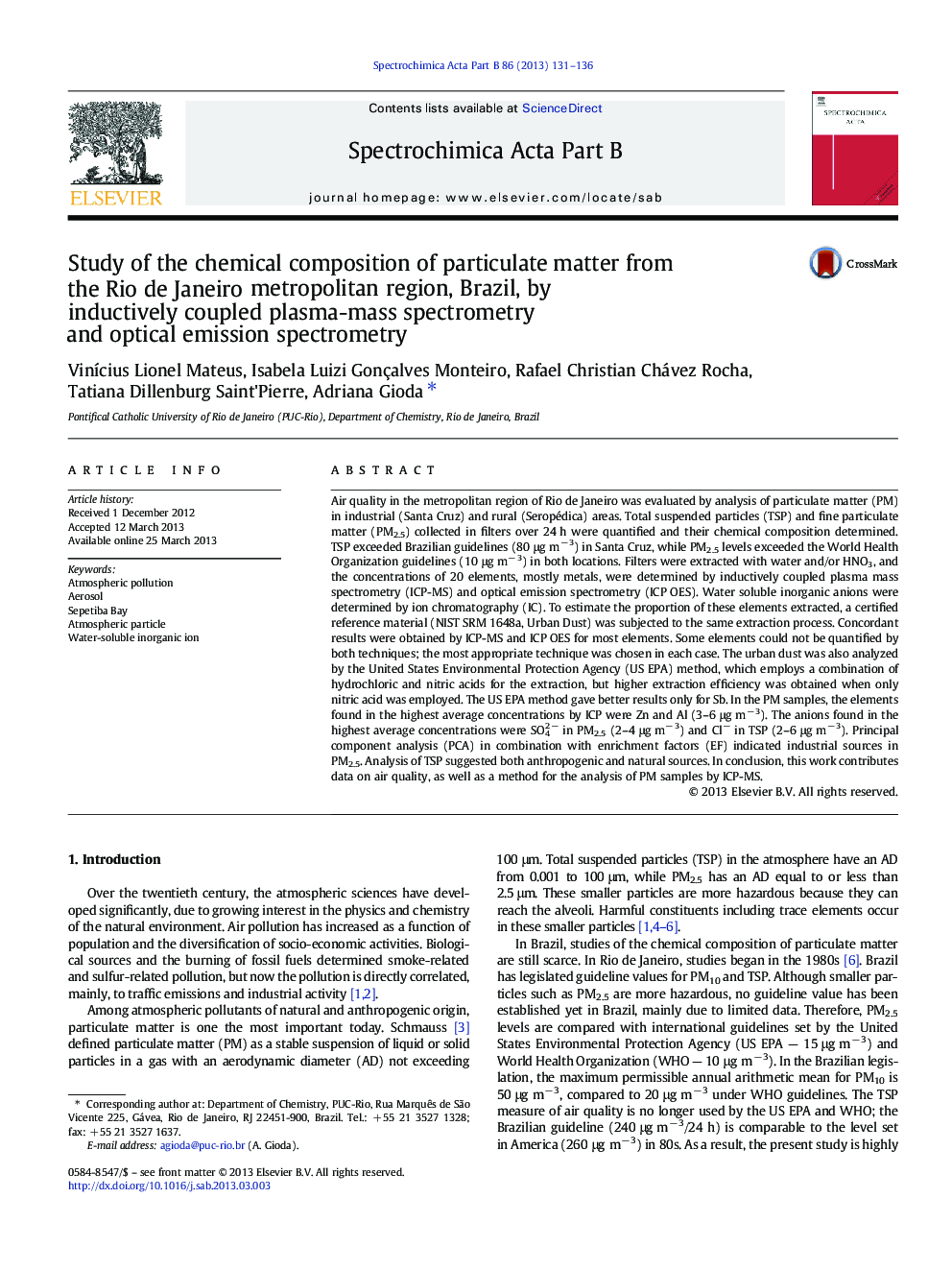| کد مقاله | کد نشریه | سال انتشار | مقاله انگلیسی | نسخه تمام متن |
|---|---|---|---|---|
| 1239859 | 1495715 | 2013 | 6 صفحه PDF | دانلود رایگان |

• Chemical characterization of particulate matter by ICP OES and ICP-MS
• Principal component analysis (PCA) of elemental composition to identify sources of pollution
• Evaluation of air quality of Rio de Janeiro State
Air quality in the metropolitan region of Rio de Janeiro was evaluated by analysis of particulate matter (PM) in industrial (Santa Cruz) and rural (Seropédica) areas. Total suspended particles (TSP) and fine particulate matter (PM2.5) collected in filters over 24 h were quantified and their chemical composition determined. TSP exceeded Brazilian guidelines (80 μg m− 3) in Santa Cruz, while PM2.5 levels exceeded the World Health Organization guidelines (10 μg m− 3) in both locations. Filters were extracted with water and/or HNO3, and the concentrations of 20 elements, mostly metals, were determined by inductively coupled plasma mass spectrometry (ICP-MS) and optical emission spectrometry (ICP OES). Water soluble inorganic anions were determined by ion chromatography (IC). To estimate the proportion of these elements extracted, a certified reference material (NIST SRM 1648a, Urban Dust) was subjected to the same extraction process. Concordant results were obtained by ICP-MS and ICP OES for most elements. Some elements could not be quantified by both techniques; the most appropriate technique was chosen in each case. The urban dust was also analyzed by the United States Environmental Protection Agency (US EPA) method, which employs a combination of hydrochloric and nitric acids for the extraction, but higher extraction efficiency was obtained when only nitric acid was employed. The US EPA method gave better results only for Sb. In the PM samples, the elements found in the highest average concentrations by ICP were Zn and Al (3–6 μg m− 3). The anions found in the highest average concentrations were SO42 − in PM2.5 (2–4 μg m− 3) and Cl− in TSP (2–6 μg m− 3). Principal component analysis (PCA) in combination with enrichment factors (EF) indicated industrial sources in PM2.5. Analysis of TSP suggested both anthropogenic and natural sources. In conclusion, this work contributes data on air quality, as well as a method for the analysis of PM samples by ICP-MS.
Journal: Spectrochimica Acta Part B: Atomic Spectroscopy - Volume 86, 1 August 2013, Pages 131–136